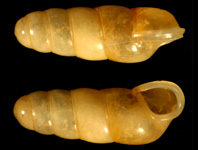Abstract
The 25 putative species and two subspecies of the doriae group of the genus Cryptops (subgenus Cryptops) from the Old World and the Australasian region are here reviewed. The following are regarded as valid: C. audax Attems, 1928, C. aus-tralis Newport, 1845, C. dentipes Lawrence, 1960, C. dilagus Archey, 1921, C. doriae Pocock, 1891, C. japonicus Takakuwa, 1934, C. lamprethus Chamberlin, 1920, C. milloti Lawrence, 1960, C. modiglianii Silvestri, 1895, C. nanus Attems, 1938, C. navis Chamberlin, 1930, C. nepalensis Lewis, 1999, C. niuensis Chamberlin, 1920, C. pauliani Law-LEWIS 2 · Zootaxa 3683 (1) © 2013 Magnolia Press rence, 1960, C. philammus Attems, 1928, C. polyodontus Attems, 1903, C. setosior Chamberlin, 1959, C. stupendus Attems, 1928, C. tahitianus Chamberlin, 1920, C. typhloporus Lawrence, 1955. South African material assigned to C. aus-tralis by Attems (1928) is described as a new species C. capensis, and C. (C.) australis africanus Lawrence, 1955 is raised to full specific status as C. africanus. C. sinesicus Chamberlin, 1940 is a new junior subjective synonym of C. navis. C. afghanus Loksa, 1971, C. gracilimus Machado, 1951 and C. pauperatus Attems, 1937 are nomina dubia. Of the species here regarded as valid, further material from Australia and New Zealand is required to clarify the characteristics of C. aus-tralis. There has been confusion over the identities of the New Zealand species C. dilagus, C. lamprethus and C. polyo-dontus; their relationship should be further examined. The South African C. philammus and C. stupendus are also very similar and it is possible that further work may show them to be conspecific. The widely distributed C. doriae populations would, likewise, merit further investigation as would the relationship of the species to C. nepalensis and C. niuensis. It is possible that the inadequately described C. afghanus is identical to C. doriae. A provisional key to these species is pro-vided.

